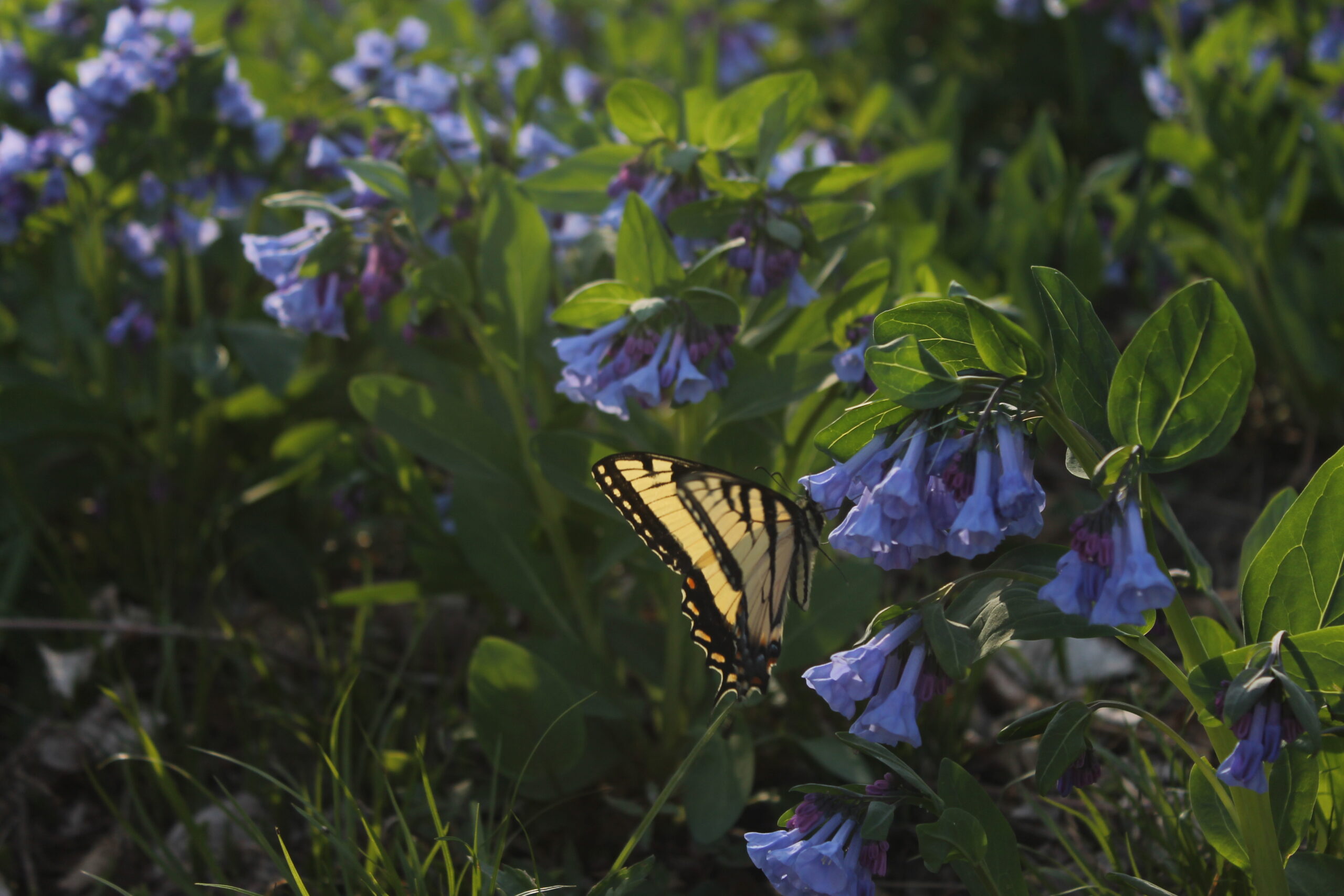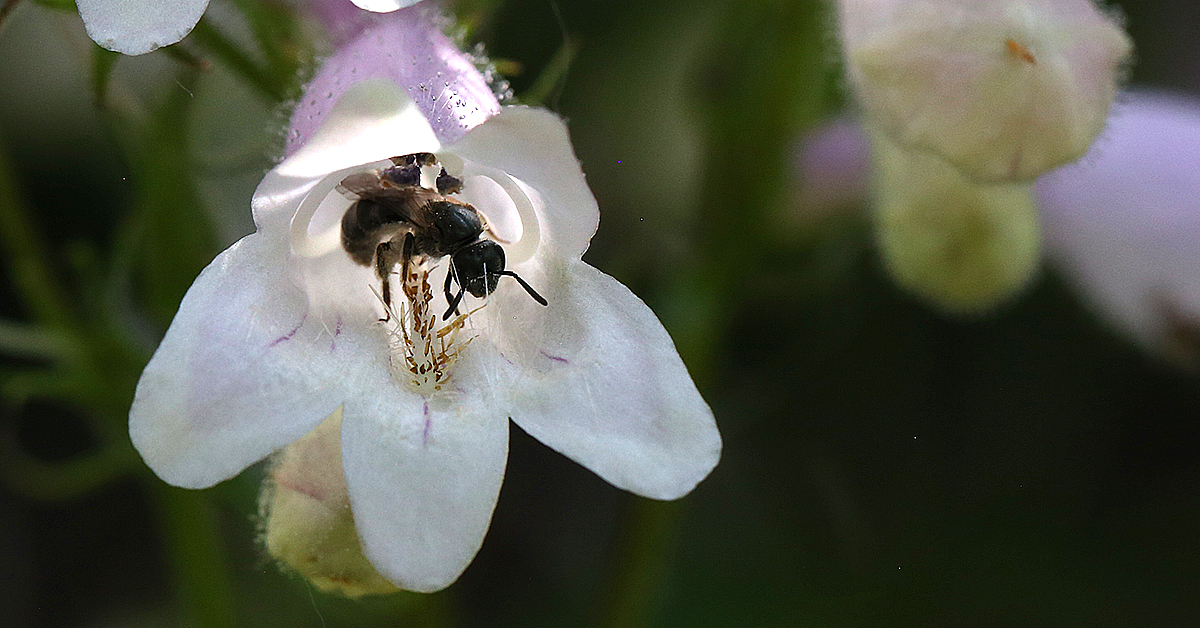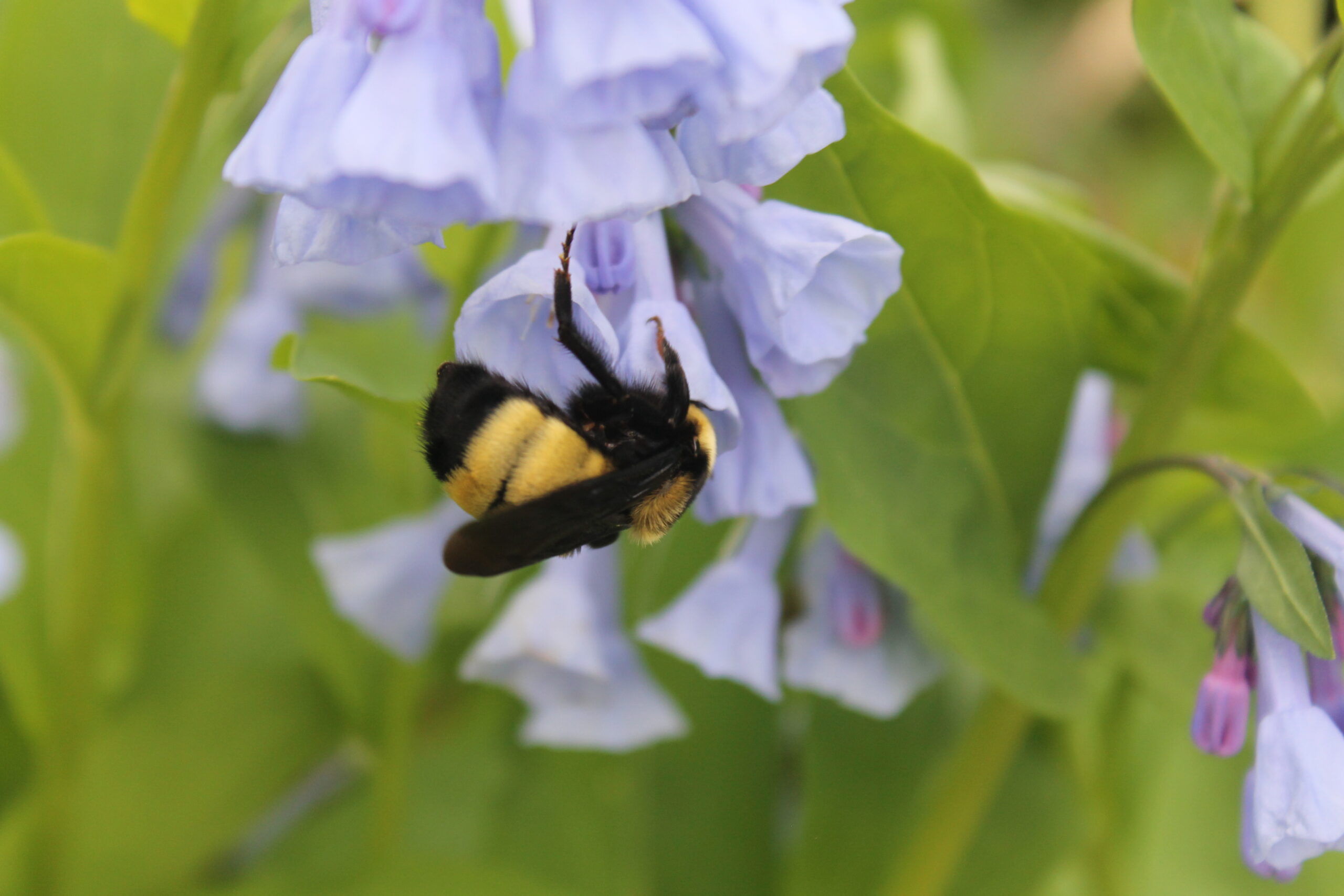Article guest written by Lisa Kuehl, a volunteer member of the Pollinator Friendly Ames group
DID YOU KNOW that the City of Ames is a national leader in pollinator conservation? An exciting new 10-year plan, developed in 2023, aims to support bees, butterflies, insects, and birds through education, research, and collaboration. The Pollinator-Friendly Ames Plan is a dedicated effort between the City and Prairie Rivers of Iowa, with partnerships growing between many businesses, organizations, schools, homeowners’ and neighborhood associations, and, of course, the residents of Ames.
Thanks to the hard work of the Ames Pollinator-Friendly Community Task Force, this detailed plan is now in place, providing guidance and goals for helping Ames help our pollinators. Among these goals are creating more diverse habitats in yards, parks and green spaces, monitoring the numbers and kinds of pollinators observed, reducing pesticide use and sharing with the citizens of Ames ways in which they can help and become involved.
Why is any of this important to you? Because if you like to eat, chances are you can thank a pollinator! These busy insects, primarily bees, are what allow our fruits and vegetables to become our food. Other pollinators, such as butterflies, moths, insects and birds, scatter pollen, helping to grow beautiful native plants. Native plants are also what help purify our drinking water through their long, deep root systems that filter the groundwater. And native plants host caterpillars which provide critical food sources for many species of baby birds.
So, how can you be part of this amazing effort? Caring and supporting pollinators can be as simple as reducing your use of lawn pesticides, potting one native plant on your porch or converting part of your lawn into a diverse habitat to nourish pollinators in every stage of their lives. The City of Ames has many great resources for helping you get started! You can visit the City website or the Prairie Rivers of Iowa website to learn more.
On both websites you and your family will find ways to be a “Butterfly Bestie” and start taking steps towards helping the City meet its goals. Remember, even the most simple of actions can make a very big difference for our pollinators! If you’d like to know more about volunteering your time and talents, you are welcome to join one of the Plan’s four current committees: Education, Policy, Research or Partnerships. We would love to have you on board!
Pollinator-Friendly
Ames Needs You!
Whether you’re a beginner or an expert, you can help. Join the Pollinator Team and contribute to protecting bees, butterflies, and other essential pollinators.
Do you have pollinator habitat in your yard? Self report your habitat to help our group keep track of the pollinator friendly sites in Ames!
Pollinator habitat is an area that has any blooming flowers, whether on fruit trees, veggie gardens, or flower gardens!
Are you interested in learning more about the plan and what your group can do to help? We will present to your group/club/organization! Just click the button below to sign up.





I am trying hard to help birds and pollinators on my land. I hope the City of Ames will try hard to help birds and pollinators. Two recent Ames City Council decisions will result in the erection of a large new night-illuminated billboard and the destruction of several large old oak trees. Those changes will not help birds and pollinators.
I know the Council believed those two decisions were absolutely necessary. That is one more reason why I really hope that the City of Ames will demonstrate its commitment to help birds and pollinators by taking multiple on-the-ground positive actions to help birds and pollinators during the months and years ahead.
Every additional acre that is covered by new buildings and concrete is a loss for wildlife, and usually creates new challenges for water quality as well. Just compensating for the ongoing impacts of Ames growth is a challenge that will need to be met in order for the Ames pollinator plan to have meaningful results.
And here is one immediate action that could be taken. A recent drive along East Lincoln Way between Duff and I-35 showed several obvious blooming patches of Eurasian hemlock, a poisonous invasive exotic plant which is legally (and justifiably) considered a secondary noxious weed in the Iowa Code. Those patches have been growing and blooming for at least the past few years. A few might be on public property, it’s hard to tell. The obvious presence of this ecologically-awful plant along a major Ames road is not a good look. How about getting rid of it?